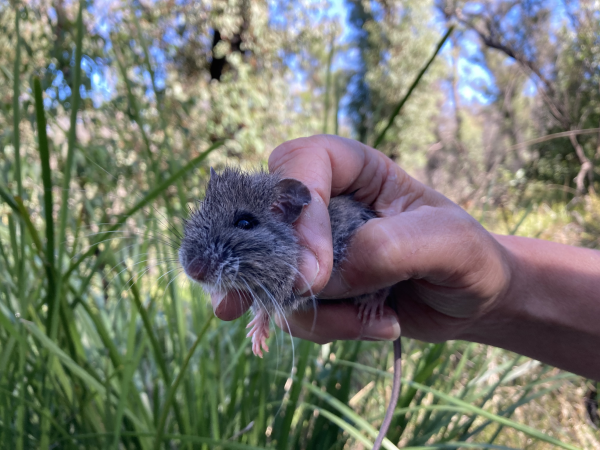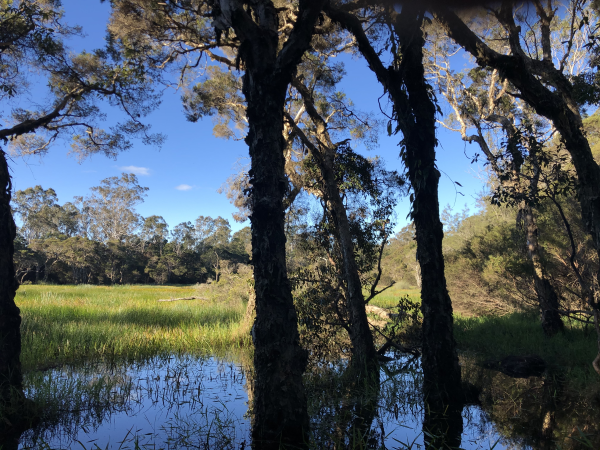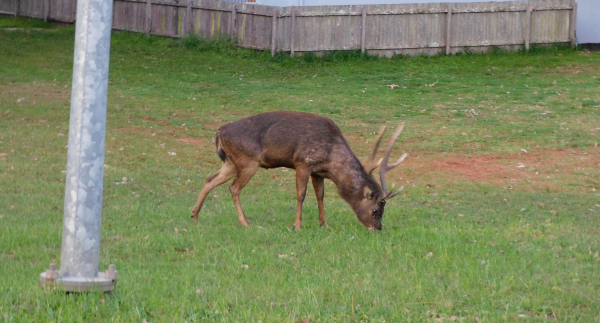Feral Deer
Populations of Feral Deer are known across the region, including the Port Macquarie, Upper Macleay Valley, Nambucca, Coffs Harbour and Nana Glen-Bucca-Woolgoolga areas. Isolated sightings have been reported in other areas including the Tweed, Guy Fawkes River, Cathedral Rocks, Bellinger River and New England National Parks.
Regional management focus
Feral Deer grazing and trampling are recognised as a key threatening process in NSW (NSW Scientific Committee 2005). Feral Deer management is a high priority due to their impacts on human safety, native environments, threatened species and ecological communities, and rural and horticulture production systems.
Managing their numbers and impacts is hindered by the limited number of effective controls available and a range of community perceptions about their status as a pest versus valuable resource. Many land managers do not have the ability or suitable firearms to undertake shooting successfully.
The main aims of North Coast Wild Deer management are:
- increase the effectiveness of control methods available, especially around urban and peri-urban areas
- undertake population density investigations for existing Feral Deer populations to determine what level of control is required to reduce current populations
- implement the priority actions of the Hastings Wild Deer Management Plan [link]
- support research for the approval of a humane toxin which will provide an additional control tool
- manage other high priority populations of Feral Deer in the region
- raise public awareness of the negative impacts of these pest animals
- better understand the biosecurity threat posed by Feral Deer, and the nature of their impacts on agriculture.
Expectations of land managers
All land managers are asked to report sightings of feral deer. This provides valuable information on where they are and helps prioritise management
To report feral deer:
- Download and install the FeralScan app on your smart phone - https://www.feralscan.org.au
- Record a sighting on the FeralScan website
- Call your nearest Local Land Services office on 1300 795 299
Impact of feral deer on threatened species
Grazing and trampling caused by feral deer is listed as a Key Threatening Process in NSW. This means the impact they have on the environment threatens native species that are less able to compete for food and habitat.
When males compete during the breeding season (or rut), they inflict significant damage on native flora – rubbing and scraping trees, shrubs and soil, ring-barking trees and uprooting plants, displacing nesting animals and disturbing native habitat.
In the Port Macquarie-Hastings area, rut behaviour is especially destructive to threatened species including the White-flowered wax plant (Cynanchum elegans), Beach acronychia (Acronychia littoralis) and Biconvex paperbark (Melaleuca biconvexa).
Continued degradation of rainforests also directly impacts habitat for the Wompoo fruit pigeon, Rose-crowned fruit dove and flying fox species including the Grey-headed and Little Red flying foxes.
Many species are particularly vulnerable in the recovery phase after a bushfire. In the Port Macquarie-Hastings are this includes the:
- Rufous Scrub-bird (Atrichornis rufescens)
- Koontoo or Hastings River Mouse (Pseudomys oralis)
- Brush-tailed Rock-wallaby (Petrogale penicillate)
- Eastern Bristlebird (Dasyornis brachypterus)
- Giant Barred Frog (Mixophyes iteratus)
- Fleay's Frog (Mixophyes fleayi)
- Long-Nosed Potoroo (Potorous tridactylus tridactylus)
- Koontoo or New Holland Mouse (Pseudomys novaehollandiae)

Above - the endangered Kontoo, or Hastings River Mouse, is particularly vulnerable to the impacts of deer during the recovery period after bushfire.
Impacts of feral deer on threatened habitats
Grazing and trampling by Deer is listed as a Key Threatening Process to the composition and structure of habitats of threatened fauna. This means the environments that our threatened species depend on for survival are significantly altered by the presence of feral deer, increasing the threat to these species.
Threatened habitats in areas where feral deer are known to roam on the North Coast include the critically endangered Littoral rainforests and endangered Swamp Sclerophyll forests. Both of these habitat types are severely degraded by aggressive behaviour by deer, particularly during the rut.
Coastal vine thickets are trampled and also pulled apart with antlers during competitive displays and fights by bucks for does.
Scent marking and rubbing of antlers leads to many trees becoming ring-barked and dying, whilst browsing on shrubs and grasses, forbs and other general foliage further degrades these communities.
Weed seeds are introduced in scats and increased light penetration from disturbed canopies - particularly in Littoral Rainforests - sets the conditions for rapid weed invasion, particularly from Lantana and Bitou Bush - both of which are declared Weeds of National Significance.

Above: This swamp sclerophyll forest is an endangered ecological community, a naturally occurring group of native plants, animals and other organisms living in a unique location. Grazing and trampling by deer is listed as a threat to this habitat type on the North Coast.
Impacts of feral deer on agriculture
Deer have incredibly strong hind legs with some species able to jump fences up to 2.5m high. This enables them to invade farms, graze on pastures and crops, consume stock water and feed, congregate around water sources and damage riparian zones around dams, waterholes, creeks and rivers.
During the rut, or breeding season, male deer behave aggressively and damage infrastructure by rubbing, scraping and fighting.
The impact on agricultural enterprises varies but can easily reach the tens of thousands of dollars each year for farmers due to increased grazing pressure,loss of crops and damage to infrastructure.Sub-page 1d: Urban impacts.
Impacts of feral deer in the urban environment
Feral deer are increasingly present in urban areas, grazing on lawns and backyard vegetable gardens, destroying landscaping, destroying community spaces such as Parks and causing motor vehicle strikes.
Feral deer should not be approached by people as they are wild animals and are unpredictable. Stags can be particularly aggressive during the rut, or breeding season, which varies between species.

Impacts of feral deer on waterways
Feral deer congregate around water sources, with their hard hooves and grazing behaviour disturbing the soil and dislodging plants, exposing the soil to erosion.
This is further compounded during the rut, or breeding season, when male deer compete aggressively and damage plants and soil, scraping the soil to scent mark the ground, pulling out shrubs and severely damaging trees.
Exposing the soil in waterways leads to increased turbidity – or cloudiness – of the water, impacting aquatic plants and animals. This then has a flow on effect to the rest of the waterway and it’s surrounds, having impacts both up and down the food chain and contributing to collapses in waterway ecology, leading to algae outbreaks and fetid dams.
Feeding apex predators
Controlling feral deer brings with it some unexpectedly positive outcomes for the North Coast.
When deer are euthanised in the Port Macquarie-Hastings area, their carcasses are taken to the Billabong Zoo just off the highway near Port Macquarie. The zoo is home to several apex predators that would predate on deer or equivalent species in their home environments, such as lions, cheetahs and crocodiles
These animals are fed carcases with hides on and the lean red meat provides them a more holistic diet than other sources of meat which have been skinned and processed.